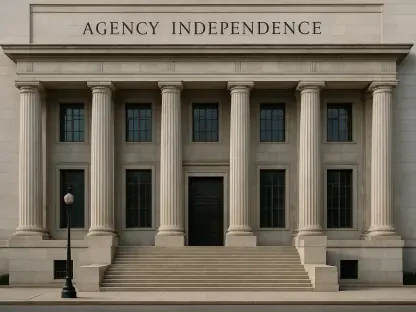In a significant development, the U.S. Department of Labor (DOL) has decided to pause the enforcement of the 2024 independent contractor rule, a move shaped by ongoing legal disputes questioning the rule’s validity. This approach entails relying on previous guidance documents for regulatory direction, particularly a 2008 fact sheet and a 2019 opinion letter. These documents offer existing methodologies for addressing the Fair Labor Standards Act (FLSA) issues, especially where back pay or civil monetary penalties are not a concern. This temporary backtrack highlights the complexities and challenges in classifying workers across the United States as debates over worker status and rights continue to evolve in the legal realm.
The Framework of the 2024 Contractor Rule
Understanding the “Totality-of-the-Circumstances” Approach
The 2024 contractor rule, implemented under President Biden’s administration, was designed with a new framework known as the “totality-of-the-circumstances” test. This ambitious effort aimed to refine the criteria for classifying workers as independent contractors, covering six specific factors. These include opportunities for profit or loss, the level of the individual’s investment, the permanence of the working relationship, the degree of control over how work is completed, how integrated the work is within the larger business, and the worker’s skill and initiative levels.
This new standard intended to offer a more comprehensive view of worker classification by considering multiple factors rather than a singular focus. The rule’s intent was to enhance federal wage protections for those deemed misclassified, essentially shifting the landscape to bring more workers under direct employee protection umbrellas. However, this shift faced immediate resistance from various business entities, which feared that the increased regulation could lead to higher labor costs and operational adjustments, sparking a host of lawsuits challenging its implementation.
Contrast with the Trump-Era “Economic Reality” Test
Under the Trump administration, a markedly different principle guided worker classification with the “economic reality” test. This earlier approach emphasized only a couple of key factors—mainly, the worker’s control over their activities and their propensity for profit or loss. It provided businesses with more leeway in engaging independent contractors without encountering stringent compliance requirements. The repeal and replacement of this criteria by the Biden-era rule revealed a sharp policy divergence aligned with political ideologies, portraying contrasting views on labor rights and business operations.
Litigation now questions whether this shift fits within acceptable legal interpretations of statutory frameworks. Central to this dispute is whether the “totality-of-the-circumstances” test overreached the authority normally granted to the DOL, intensifying debates over the balance between regulatory oversight and market freedom. The resulting legal uncertainty underscores the reality that worker classification in the U.S. is deeply intertwined with political undercurrents, impacting millions of workers and countless businesses.
The Implications for Workers and Employers
The Struggle for Consistency in Policy Execution
The suspension of active enforcement of the 2024 contractor rule by the DOL amidst these legal challenges reveals an ongoing struggle for consistency in worker classification policy. With each administration potentially reversing the undertakings of its predecessor, there is a persistent ebb and flow in regulations that generate uncertainty across industries. For businesses, this inconsistency poses operational challenges, requiring adaptive measures each time regulatory approaches change. Meanwhile, it muddles the certainties that many workers depend upon regarding their classifications and related rights, especially when these classifications influence their benefits and protections.
Moreover, business groups argue that too frequent regulatory shifts create an unstable business environment. This uncertainty can stifle innovation and economic growth, as sectors heavily reliant on flexible work arrangements—such as gig economies and freelance platforms—struggle to align their practices with changing expectations. For employees, the inconsistent implementation of worker protections calls into question the security of labor rights, particularly concerning wage protections, healthcare benefits, and job stability.
Navigating Legal Challenges and Enforcement Dynamics
Despite the DOL’s decision to halt enforcement, the 2024 contractor rule remains a point of reference in private litigation. This implies that both employees and employers must remain informed and compliant with current standards under the FLSA. The DOL’s field staff will not prioritize rule enforcement yet businesses and workers can still pursue legal recourse related to misclassification claims. This dual approach cautiously allows the contentious rule to influence ongoing disputes without immediate federal action, providing room for courts to offer clarity.
The subdued enforcement, in this case, points to a strategic pause by the DOL, reflecting its acknowledgment of the rule’s contentious legal status. This awareness acknowledges the need for judicial clarification as businesses and individuals navigate the liminal phase of legal ambiguity. The situation underscores the delicate balance between regulatory intention and the judiciary’s role in affirming or contesting such policies, emphasizing the intricate nature of creating long-lasting, effective worker classification laws.
Previewing Future Considerations
The U.S. Department of Labor (DOL) has taken a notable step by pausing the enforcement of the 2024 independent contractor rule. This decision stems from ongoing legal disputes challenging the rule’s validity. Instead of moving forward with the new rule, the department has opted to rely on prior guidance, specifically a 2008 fact sheet and a 2019 opinion letter. These documents provide already established methods to address issues under the Fair Labor Standards Act (FLSA), particularly in cases where back pay or civil monetary penalties aren’t involved. This temporary change underscores the complexities and ongoing challenges surrounding worker classification throughout the United States. As debates about worker status and rights continue to unfold in the legal arena, the DOL’s move reflects the evolving landscape of employment law. By choosing not to enforce the new rule immediately, the Department aims to navigate these intricate issues more effectively, waiting for legal clarity to better define future actions.









